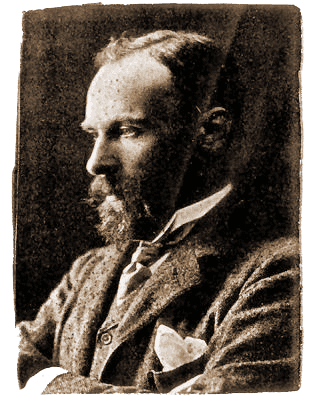Biography
Discover more articles about John William Waterhouse

Waterhouse painted figurative and narrative pictures primarily in the medium of oil. He found inspiration in stories and legends from British literature and Classical mythology. His paintings are scattered throughout the world: many are owned by public museums in the United Kingdom, Australia and elsewhere. Others are in the hands of private collectors in the UK, USA and Russia. Waterhouse's most famous painting is The Lady of Shalott (1888) owned by London's Tate Gallery, and currently on loan to Falmouth Art Gallery. It depicts a scene from Alfred Lord Tennyson's poem of the same name.
Reputation
In his lifetime, Waterhouse was well regarded by his fellow artists, art critics and the general public. His work fell out of fashion, along with that of other Victorian painters, with the advent of the First World War, and wouldn't become popular again (with the public at least) until the late 20th century.
The Models
Waterhouse's paintings are famous for the feminine beauty depicted in them. His genre of female beauty became known as 'The Waterhouse Girl'. The identity of Waterhouse's models range from family members and friends, to professional artists' models. Some of the young female models would later become famous in their own right as renowned stage actresses and movie stars.
Continue reading
Biographical Overview
Painter of classical, historical, and literary subjects. John William Waterhouse was born in 1849 in Rome, where his father worked as a painter. He was referred to as “Nino” throughout his life. In the 1850s the family returned to England. Before entering the Royal Academy schools in 1870, Waterhouse assisted his father in his studio.
Read more »
Photographs
A selection of photographs depicting the painter John William Waterhouse are shown on this page. They include formal studio portraits together with informal family snapshots. Most of the photographs come from the John Physick Collection. The others are reproduced either in the Anthony Hobson 1980 monograph, or Jeremy Maas's Victorian Art World in Photographs.
Read more »
Obituary Overview
John William Waterhouse died on 10th February 1917 and was buried at Kensal Green Cemetery in northwest London. Although by 1917 Waterhouse's work had fallen out of fashion, and the country was in the midst of the Great War, several newspapers covered his death and printed obituaries.
Read more »
Reminiscences about J.W. Waterhouse
Almost nothing is known of Waterhouse's private life. Gathered here is a selection of mentions and anecdotes discovered by searching old magazines and books.
Read more »
Discover Exhibition, Auction News and recent books and articles about Waterhouse
